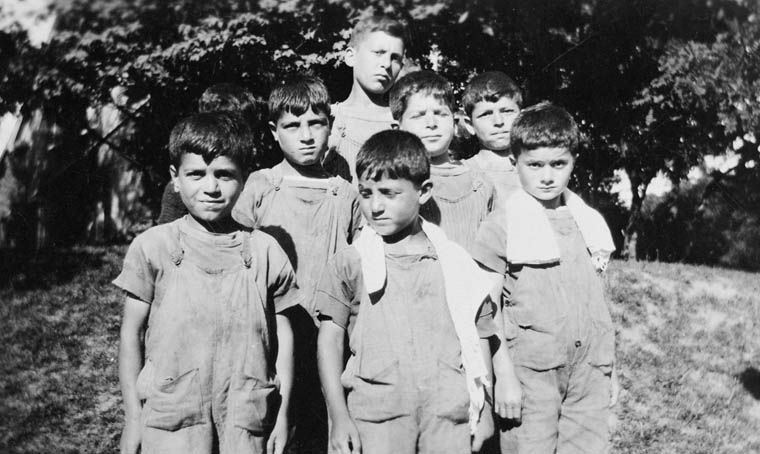Special for the Armenian Weekly
This article is dedicated to the memory of Kourken Magarian. Magarian was one of the 110 Georgetown Boys—orphans of the Armenian Genocide that were brought to Georgetown, Ontario, Canada, between 1923-27, in what became known as “Canada’s Noble Experiment,” the first humanitarian act on an international scale by the country.
While I spent much of my youth serving on the altar at church, over the years, my attendance record has been dismal, to say the least—reduced to short appearances only during the major holidays, mainly Easter and Christmas.
One particular service that I have attended for as long as I can remember, however, has been the nighttime Holy Thursday Mass (Avak Hinkshapti). In what has become an unspoken tradition during the past five years, a close group of my friends and I find ourselves at church on the Thursday before Easter. Oddly, we even seem to convene in the same spot year after year. None of us are avid church-goers by any means, so I can’t really explain why this has become our custom.
Holy Thursday is an all-day affair at the Armenian Apostolic Church. I usually make it in time for the last portion of the service—the nighttime vigil kept in memory of Jesus’ last sleepless night, called Khavaroom (darkness). According to the Bible, before being arrested, Jesus prayed in the Garden of Gethsemane and endured in solitude the agony of his impending death. To remember this, during Khavaroom, six sets of laments are chanted, each followed by a Gospel reading depicting Christ’s betrayal, imprisonment, torture, trial, sentence, and crucifixion. Twelve lit candles—11 white and one black, representing Judas—are extinguished in pairs.
And then the church goes dark.
The hymn that follows is one of the few songs in the Armenian Church that is performed unaccompanied—a soloist, no organ. In it, Jesus calls out to his mother as he bears the torments of crucifixion.
“Oh mother, sweet and tender, where art thou?
Your motherly love burns within me,
My eyes are full of tears
And no one is here to wipe them…”
“Oor es mayr eem” (“Oh mother, where art thou”) is only performed once a year; always on that Thursday night, always in the pitch dark.
Our group assembled in our usual spot this year. We had made it just in time for the hymn.
As we sat in the darkness and heard the song resonate throughout the church, I couldn’t help my mind from wandering back to a century ago.
I thought about all the children who cried for their mothers as they were separated from their families and faced the most unthinkable of horrors.
I thought about all those who were left orphaned and lived their lives yearning for their mothers.
I thought of the Georgetown Boys…
Following the singing of the hymn, the priest delivered his sermon, during which he said none of us would be here now, if Jesus hadn’t been at Gethsemane; if he hadn’t been arrested, crucified and eventually resurrected.
Similarly, I thought about how none of us would be here if it weren’t for those who survived, and lived a life without their mothers “sweet and tender.”
***
On April 23, the eve of the 100th anniversary of the beginning of the Armenian Genocide, the Armenian Apostolic Church will canonize the 1.5 million victims of the crime. For the first time in over 500 years, the church will designate new saints.
For me, those children who survived and were forced to live a life knowing that they would not see their mothers again, they became my saints that night.
In the darkness of Khavaroom, which represented our collective mourning of Jesus’ crucifixion, the orphans of the genocide became my light.
The post ‘Oh Mother, Sweet and Tender, Where Art Thou?’ appeared first on Armenian Weekly.
